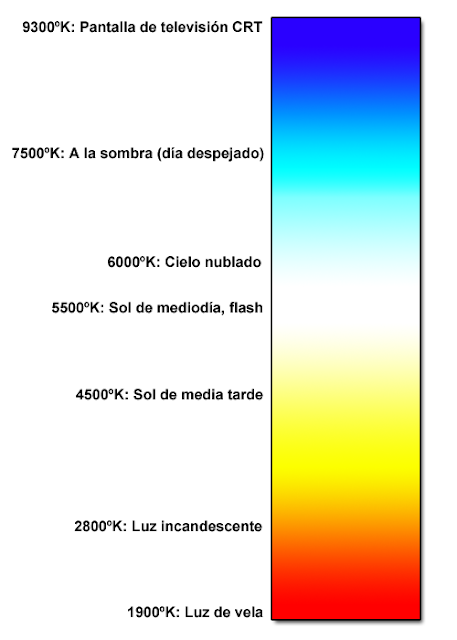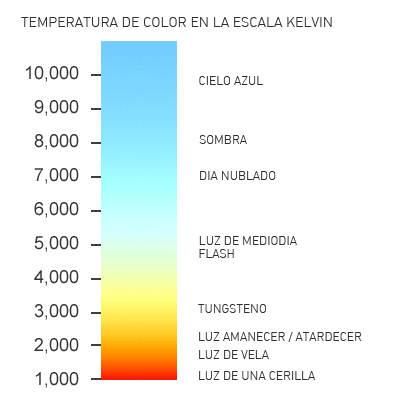Hoy os quiero hablar de uno de los principos más básicos de la fotografía, la iluminación, como entenderla, como funciona y como utilizarla.
Today I want to talk about a one of the photography basics, lighting, how to understand it, how it works and how to use it.
Pero para hablar de la iluminación tenemos que empezar por lo básico, la luz.
But before talking about lighting we have to understand the basics, the light.
La luz es energía que se transmite a través de vibraciones que viajan por el vacío y por materiales (agua, vidrio, plástico…), es una energía electromagnética, como las ondas de radio.
The light is energy that goes through empty and materials (water, glass, plastic..) by vibrations, it´s a electromagnetic energy like the radio waves.
Las ondas se transmiten por una línea ondulante. Entre una onda y otra hay una distancia de metros, centímetros, nanómetros (nm). El espectro visible va entre 400nm y 700nm (siempre dependiendo de la perfección de nuestros ojos).
These waves transmitted by a wavy line. Between one wavy line and other wavy line the distance of metres, centimetres, nanometres (nm). The visible spectrum goes from 400nm and 700nm (depending of each different eyes).
La cualidad que nosotros percibimos según la longitud de onda es el color y éste es el espectro visible: violeta-azul-verde-amarillo-naranja-rojo.
The quality of what we receive of these wavy lines length is the color, this si the visible spectrum: violet-blue-green-yellow-orange-red.
El infrarrojo es de ondas más largas que el rojo y el ultravioleta es de ondas más cortas que el violeta.
The infrared are the wavy line longer than the red and the ultraviolet are the wavy lines shorter than the violet.
Por eso la distinción de los colores puede variar en cada persona. Es un espectro continuo donde la diferencia entre un color y otro no es una barrera. Tanto nuestra retina como los materiales fotográficos no tienen una sensibilidad que pueda cubrir toda la gama de longitud de onda. En la retina están los conos, que no son sensibles a toda la gama del espectro, sino sólo al rojo, al verde y al azul. Los otros colores los percibimos por síntesis aditiva.
For this reason the distribution of the colors can vary in each individual. The spectrum is continue where the different between one color and other doesn´t have a limit. Our retina and the photography materials doesn´t have the sensibility to get all the range of wavy line length. The retina has cones that are sensitive just to the red, green and blue. The rest of the colors we perceive them as additive synthesis.
El blanco es la suma de todos los colores del espectro y nosotros artificialmente simplificamos la riqueza de gama y combinamos sólo tres colores. Así conseguimos engañar a nuestros ojos porque no es el mismo que hay en la naturaleza.
The white is the result of addition of all the spectrums and we artificially simplify the richness of the range and combine just three colors. This way we can fool our eyes cause it´s not the same as the reality in the nature.
La síntesis sustractiva se consigue poniendo un filtro a la luz blanca. El filtro puede ser cyan, magenta o amarillo (CMYK), la resultante de los tres en la misma cantidad es negro, no blanco.
The subtractive synthesis can be achieve by applying a filter to the white light. The filter can be cyan, magenta or yellow (CMYK), the result of the addition of all three is the black, not the white.
Los componentes de todos los colores del blanco no suelen estar en la misma proporción, por eso no todos los blancos son iguales.
The component of the white normally are not equally proportionated, thanks why not all the white are the same.
La temperatura del color se expresa en grados de temperatura del sistema Kelvin (no tiene grados bajo cero; el cero indica que no hay movimiento de átomos), este sistema sirve para medir la temperatura de la luz por comparación. Esa temperatura nos habla del color, no del calor.
The color temperature are measure by the Kelvin system (doesn´t have below 0 degrees, cause the 0 means not movement of atoms), this system is used to measure the temperature of the light by comparison. We are talking about temperature of the color not of the heat.
Por ejemplo si cogemos un objeto de metal negro de tungsteno mate que no irradia ni refleja luz, le damos temperatura, primero se pone rojo y si se va calentando más se hace naranja, después amarillo y llega hasta el blanco, un blanco que tira hacia el azul.
For example if we take a black metal matte tungsteno that doesn´t radiate neither reflect light, and we give some temperature, firstly will become red and as it goes getting warmth will get orange, yellow and then white, but this white will be with blue tendency.
A medida que irradia más calor, más cantidad de energía emite todo tipo de longitud de onda y tiene menos longitud de onda cuando está más caliente.
As more heat radiate less wavy line length it has and less wavy line length when its warmer.
Osea que un blanco tiende a más azul cuando tiene mayor graduación de grados kelvin, y un blanco con tendencia más amarilla tendrá menos graduación de grados kelvin.
So when a white has a blue tendency it has more kelvin degrees and when a white has a yellow tendency it has less kelvin degrees.
Osea que la temperatura de color subirá en la sombra y bajará al sol, ya que el sol tiene más componentes rojo o naranja que la luz de la sombra, y si hablamos de un día gris la temperatura sube sustancialmente.
So the color temperature of the shadow rise and on the sun will go down, cause the sun has more orange and red components that the shadow light, and if we talk about a cloudy day the color temperature raise substantially.
En definitiva, hablamos de colores cálidos y fríos en sentido inverso a la temperatura de color, que es un concepto técnico. A mayor temperatura de color más fria es la luz y a menor temperatura de color más cálida es la luz.
Summarizing, we are talking about warm colors and cold colors in the inverse sense of the color temperature, being a technical concept. A higher temperature coldest is the light and a lower temperature warmer is the light.
Por ejemplo la sombra tiene una temperatura media de 8000º, un día nublado de unos 7000º-7500º, la luz de medio día, flash o luz equilibrada suele rondar los 5200º-5500º, la luz de tungsteno continua tiene una temperatura de unos 3000º y como podéis ver en la escala lal uz del amanecer o atardecer tiene una temperatura muy baja.
For example the shadow has a temperature of 8000º, the cloudy day has around 7500º-7000º, the medium natural light or flash or the balanced light has around 5200º-5500º, the tungsten light as a continuos light has around 3000º and as you can see on the scale the sunset or sunrise has the lower temperature.
Y para controlar esta temperatura del color entra en funcionamiento el balance de blancos, la parte de la cámara que nos deja ajustar la adaptación del captador a cada tipo de luz, se puede usar manual o sino controlamos del todo las temperaturas ponerlo en automático nos hará una medición, un poco básica, de la luz percibida por el objetivo para ajustar la temperatura.
And to control the color temperature comes to the picture the white balance, some part of the camera where you can tell to the sensor what type of light are you working with, you can use it in manual settings or automatic settings, where the camera measure the light, roughly, to adjust that measure to the sensor to get the best result.
Y hasta aquí la primera parte de Iluminación,
And these is all for todays lighting 101.
Espero que os haya gustado y os haya enseñado algo,
I hope you liked it and you had learned something,
No os perdáis otros post de fotografía,
Don´t miss more photography posts,
Hasta la próxima,
Until next time,
Facebook Page ♡ Twitter ♡ Bloglovin ♡ Youtube vlog ♡ Youtube






¡Vaya repaso de Física que me acabas de dar!
Ya estoy esperando impaciente el siguiente post sobre fotografía. El manejo de la luz me parece primordial, y quiero aprender a hacerlo, y bien.
Muchas gracias por esta entrada.
genial! me alegro que te haya gustado, para mi este tipo de post son muy especiales porque son de fotografía mi pasión!! y es algo muy especial!! gracias por pasarte!
Muy buena entrada, Silvia, con conceptos básicos pero igualmente importantes para sacarle más partido a la cámara.
Un besote, amiga.
genial! me alegro que te haya gustado, esto es el principio, quiero ir poco a poco! gracias por pasarte!
hola guapa, espero ponerme al día, je, je,je..pedazo de post te has marcado para poder hacer mejores fotografías, gracias
genial! ya lo has hecho ya he ido por todos tus comentarios!! gracias por pasarte!